|
Alphabetical List |
|
|
|
|
|
|
|
County List and Topics |
|
|
|
Please sign my Guestbook and leave feedback |
|
|
||||||||||||||||||||||||||||
|
might be forgiven for thinking that the builders did not want to distract from the font, but in fact the font is believed to be later than the church itself. Pevsner puts it at no later than 1170. As Castle Frome’s font is attributed to the celebrated Herefordshire School of carving there is a wealth of evidence to support this. The north and west ends of the church are still fundamentally Norman with splayed Norman windows. The south side, however, has been marred by a collection of ill-assorted Gothic windows although one Norman window remains towards the west end. Some will feel, no doubt, that the half-timbered bell turret and south porch, dating from 1878, also mar the church’s appearance. This type of architecture, however, is vernacular in this area. To my eyes they add a splash of interest to an otherwise externally severe building but others will disagree. |
 |
 |
|||||||||||||||||||||||||||||||
|
Left: Looking towards the east. The chancel arch is Norman and very plain. Right: Looking through the chancel arch to the west. Note the splayed Norman window and door in the west wall. In front of those is the font. The panelled wood ceiling is C15. Note the nice supporting framework near the west wall. |
||||||||||||||||||||||||||||||||
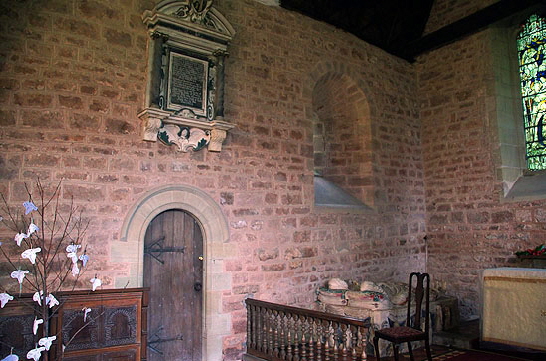 |
||||||||||||||||||||||||||||||||
 |
||||||||||||||||||||||||||||||||
|
Left: The north wall of the chancel. The Norman-looking doorway is to the vestry and I doubt that it ever was Norman. Note the monument the right of it. Right: The south side of the chancel. The priest’s door is behind the curtian. |
||||||||||||||||||||||||||||||||
 |
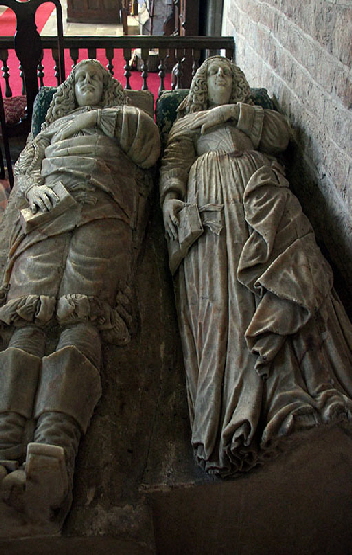 |
|||||||||||||||||||||||||||||||
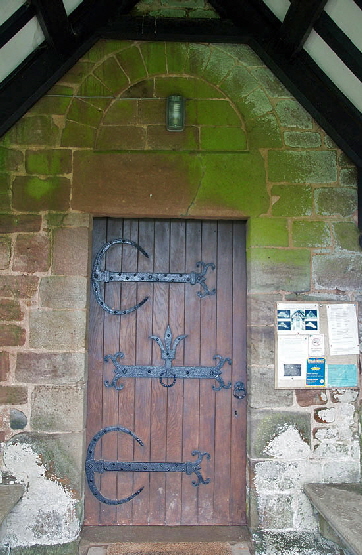 |
||||||||||||||||||||||||||||||||
|
Left: The south door. The lintel is remarkably big. Just visible above it is a Norman sundial. Centre: The priest’s door on the south side of the chancel. Note that a the lintel is one massive block of stone with just a shallow semi-circle hewn out to form a tympanum. Right: The tomb of William Unett and his wife Margery, both of whom died in the earliest C17. William is wearing cavalier-type uniform. |
||||||||||||||||||||||||||||||||
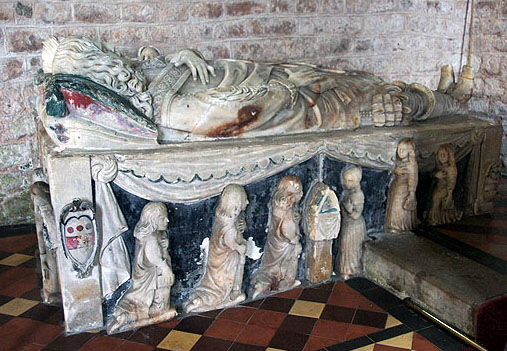 |
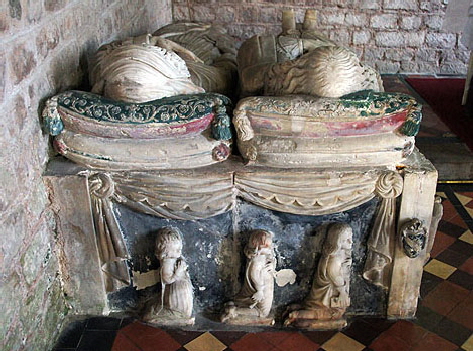 |
|||||||||||||||||||||||||||||||
|
Two more views of the Unett monument. Note the paint that I assume to be original. Look at the way the monument has been stepped to fit into this corner of the chancel. We know it hasn’t been moved here because the girl weepers (left picture) are intact and in a higher position than their brothers and sisters. |
||||||||||||||||||||||||||||||||
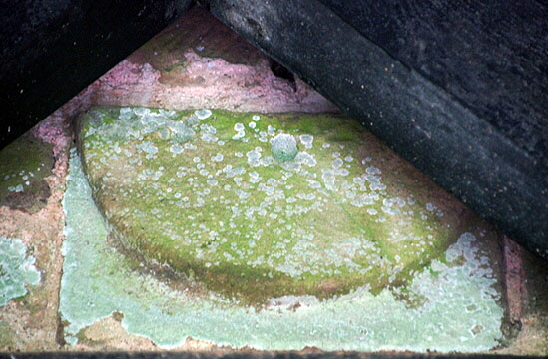 |
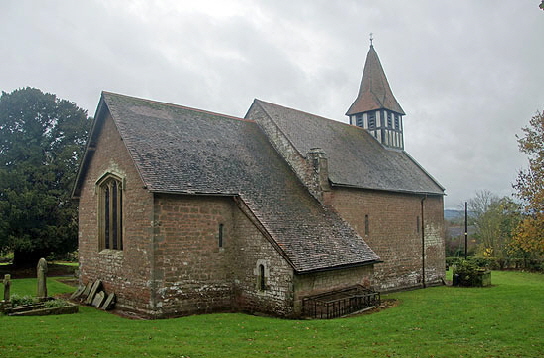 |
|||||||||||||||||||||||||||||||
|
Left: Sadly, we can see little or nothing of the detail of the Norman sundial. Right: The church from the north east. The evidence is that this is the original extent of the church so it was never tiny. The vestry is presumably from the 1878 repairs. The east window is C14. As you can see, it was a grim early November day (in 2015) when we visited, |
||||||||||||||||||||||||||||||||
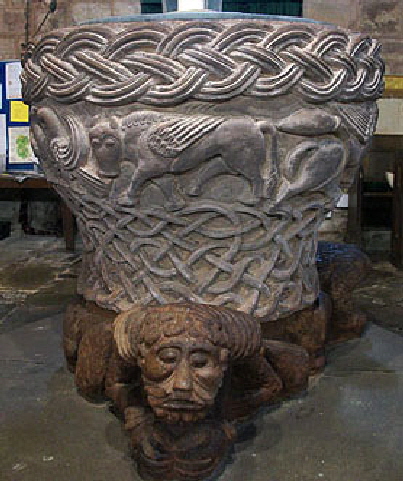 |
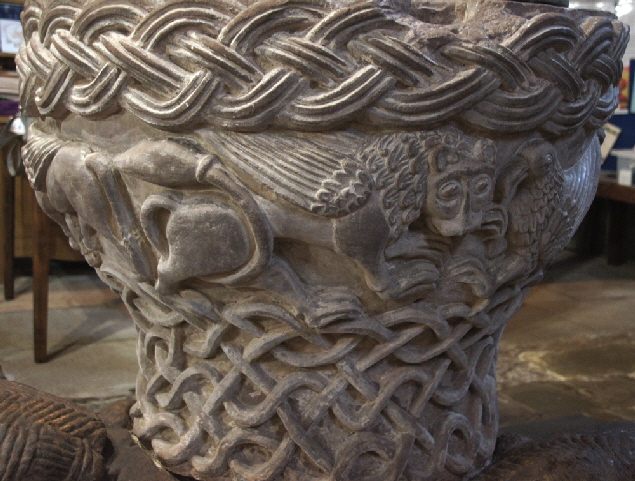 |
|||||||||||||||||||||||||||||||
|
Unlike many, if not most, Norman fonts the Castle Frome font is not at all difficult to interpret. Around the bowl we have the four Evangelists in their customary anthropomorphic guises and the Baptism of Christ. Left: The east face shows the winged bull of St Luke. Around the top of the bowl we have intertwined cable ornamentation which, as we see on many Norman fonts, really taxes the skill of the sculptor. Below the main figures is a mass of interlaced tendrils, possibly representing the tangle of evil that is transcended by the figures above. The plinth features a human head at each corner but this is the only one that is intact. The Church Guide suggests that the four figures represented evil but there is no real evidence for this. Right: The winged lion of St Mark on the north face. |
||||||||||||||||||||||||||||||||
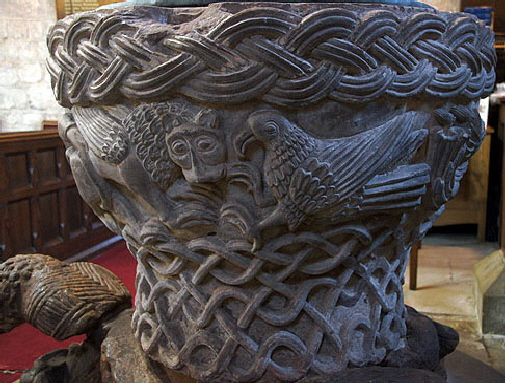 |
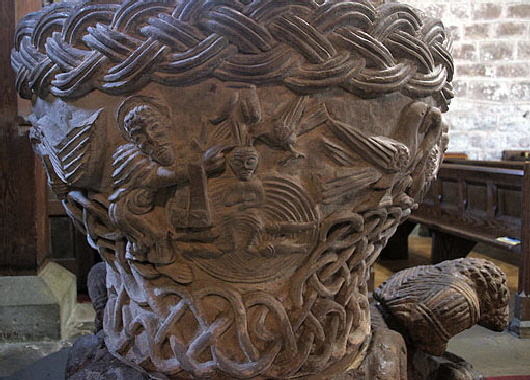 |
|||||||||||||||||||||||||||||||
|
Left: The eagle of St John meets the lion of St Mark. Perhaps only the curved beak is genuinely reminiscent of an eagle! Right: The Baptism scene on the south face. Christ is immersed in the River Jordan with St John the Baptist to the right. The Hand of God reaches from the clouds towards Christ’s head. The dove of the Holy Ghost pecks at Christ’s head, |
||||||||||||||||||||||||||||||||
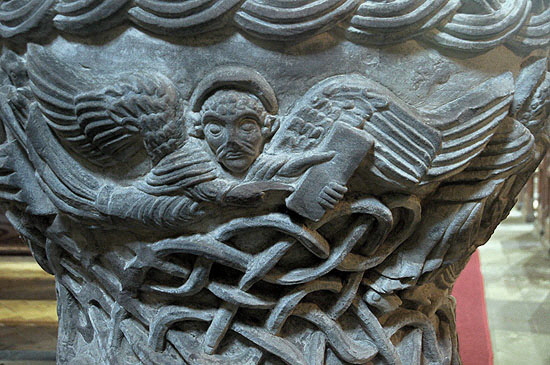 |
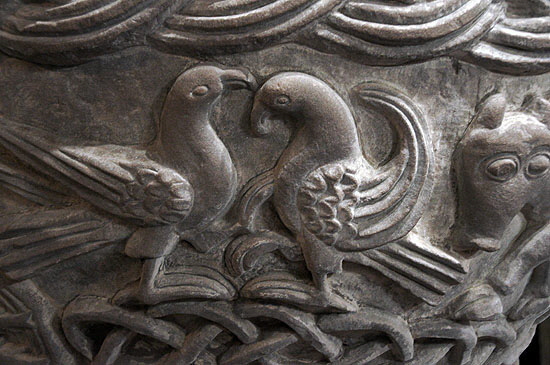 |
|||||||||||||||||||||||||||||||
|
Left: St Matthew represented as an angel and with this traditional book on the west side. Right: On the south eastern face is a pair of “affronted” doves |
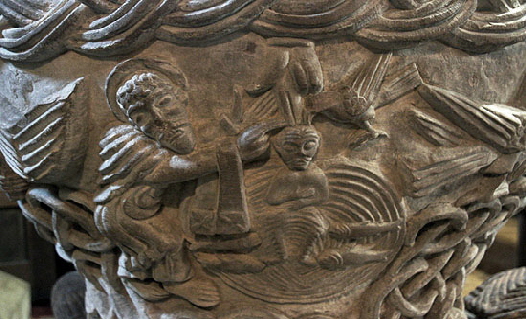 |
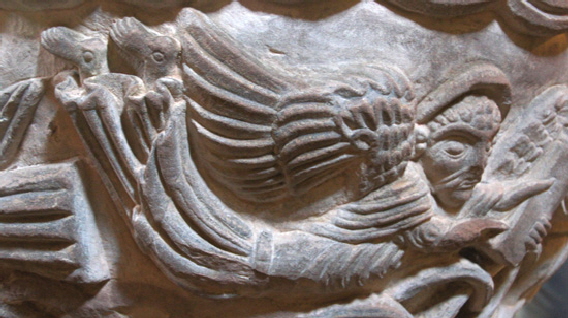 |
||
|
Left: Detail of the baptism scene. Note the fishes swimming either side of Christ’s feet! Right: St Matthew. Look at the regularity of the feathers and the folds of the drapes. Look also at the way those folds fall around the saint’s ankles - themselves rather charmingly showing the outlines of the ankle bones! Then remember that this work was carried out by a man in the twelfth century with out the benefit of hammer and chisel. Makes you think, doesn’t it? |
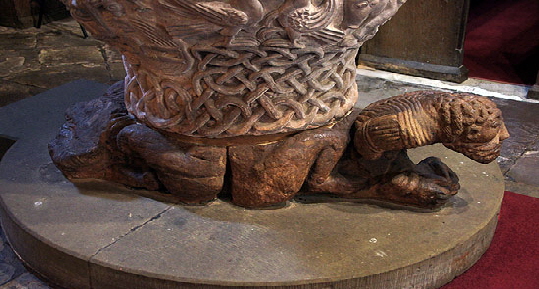 |
 |
||||||
|
Left and Right: Showing the detail of the remaining pedestal figure. |
|||||||
|
|
|||||||
